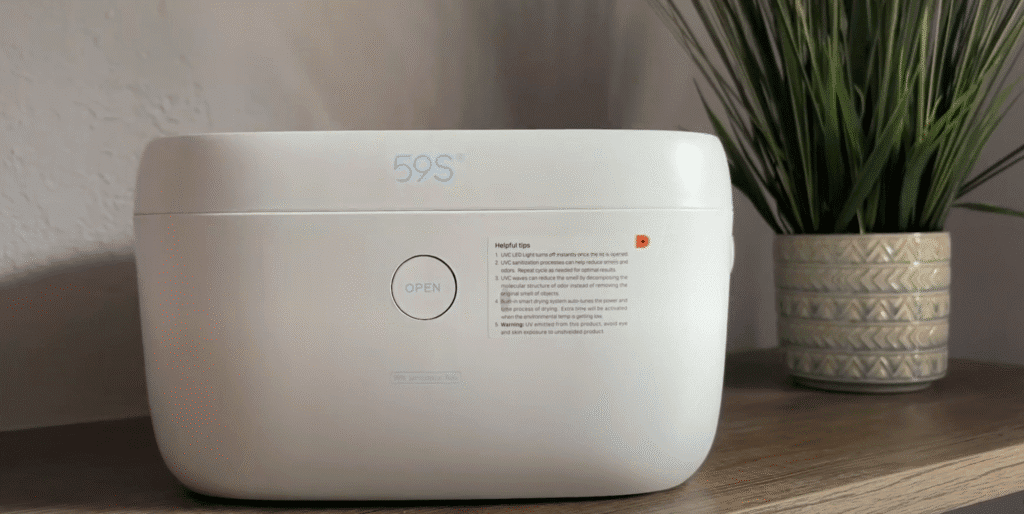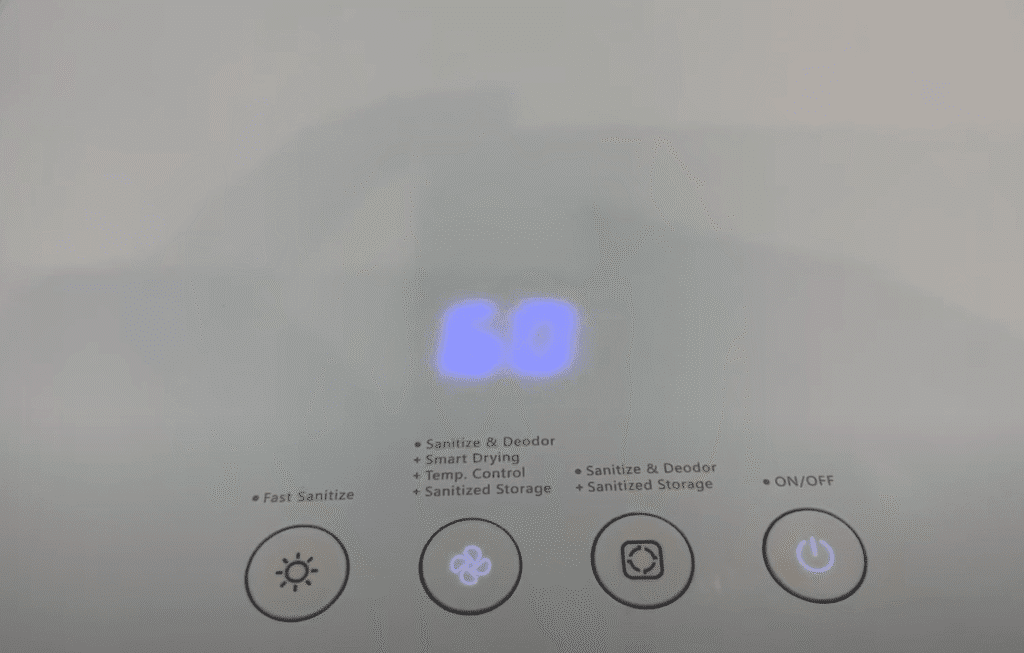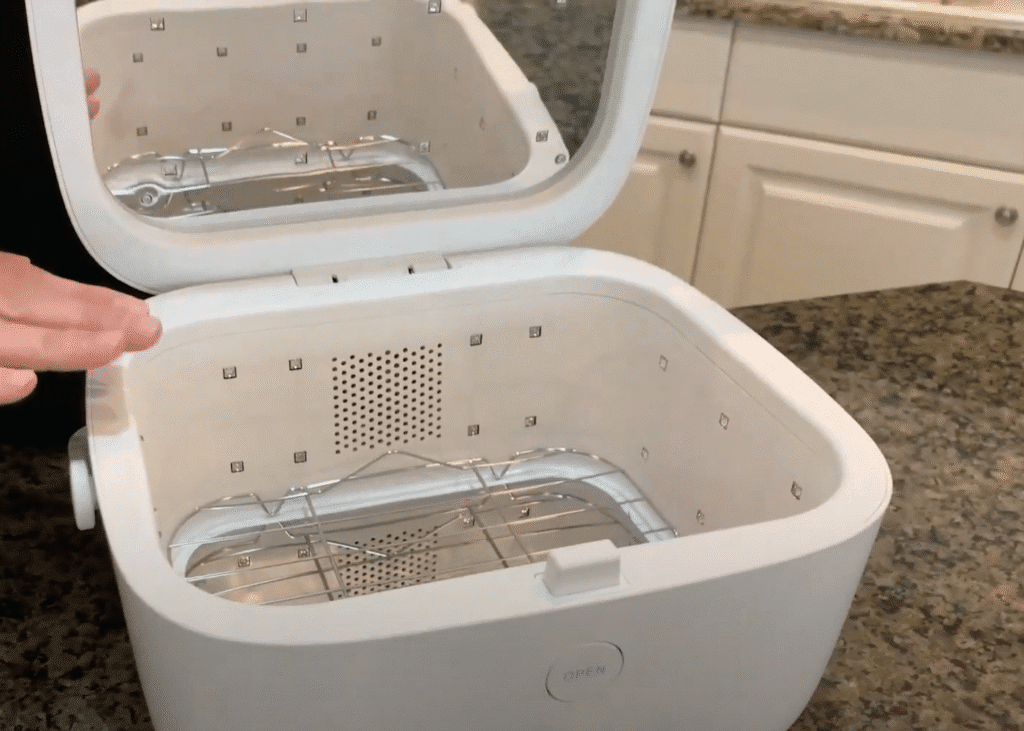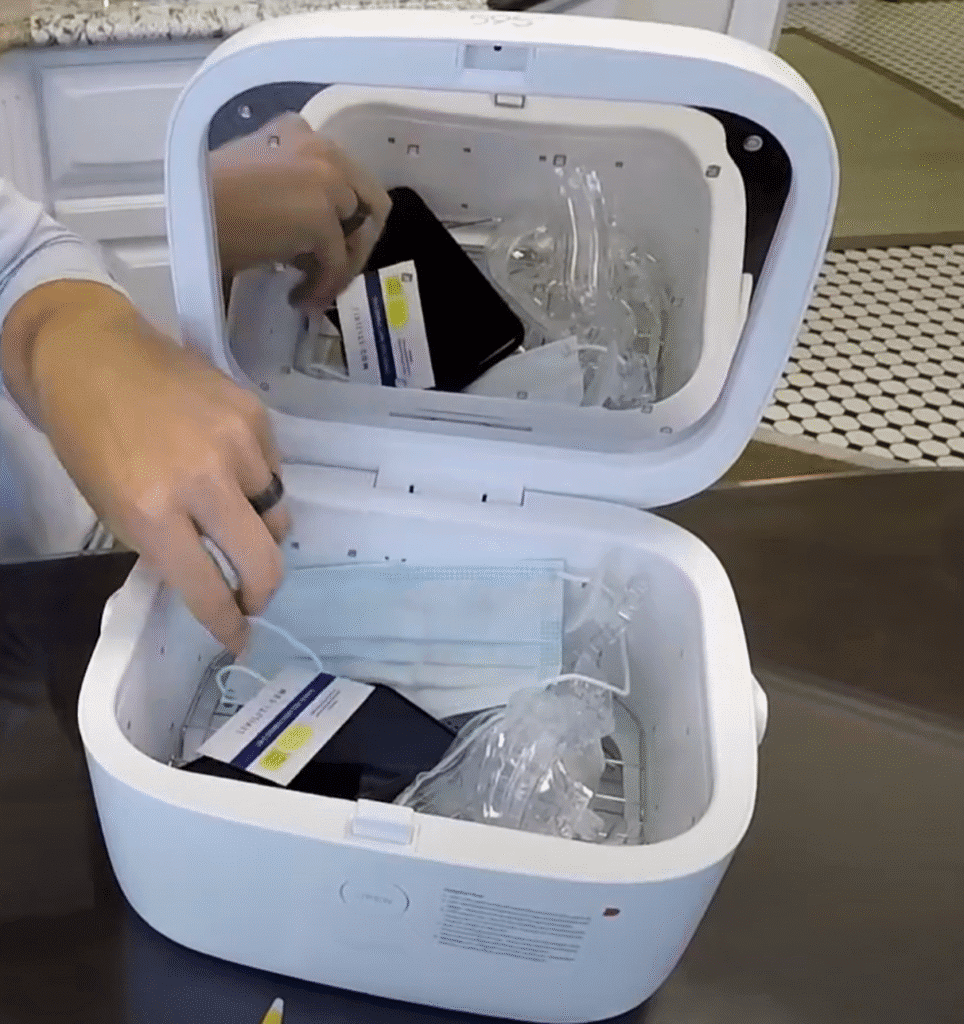Best CPAP Cleaner for ResMed AirSense 10: Why Users Love the Liviliti Paptizer UVC
If you use a ResMed AirSense 10 for sleep apnea, you know how important it is to keep your CPAP equipment clean and germ-free. But when you’re just starting out, the cleaning process can feel confusing or time-consuming.
That’s where the Liviliti Paptizer UVC CPAP Cleaner comes in. Designed to make CPAP maintenance simple and stress-free, this device uses advanced UV-C LED technology to sanitize your CPAP machine, mask, and accessories—without any harsh chemicals.
It’s fast, effective, and easy to use, making it a popular choice among ResMed AirSense 10 users who want a reliable way to stay on top of their sleep therapy routine.

Disclosure: This post contains affiliate links.
7 Key Benefits of the Liviliti Paptizer UVC
- Fast 3-minute sanitizing cycle for busy mornings
- No chemicals, ozone, or mercury – safe to use immediately after cleaning
- Three different cleaning modes to fit various schedules and needs
- Works with ResMed AirSense 10 masks, tubing, and water chambers
- Multi-purpose use for phones, keys, earbuds, and more
- Easy one-button operation with automatic cycles
- Compact design (4.29 lbs) makes it suitable for travel
The Liviliti Paptizer UVC takes the hassle out of sanitizing—so you can focus on better sleep, not equipment maintenance.
See full product details here.
How UVC CPAP Cleaning Technology Eliminates 99.9% of Germs
UV-C light has been used for disinfection since the early 1900s, but applying it to CPAP cleaning is relatively new. The Liviliti Paptizer UVC operates at 260-280 nm wavelengths – the range that destroys microorganism DNA and RNA. It eliminates up to 99.9% of bacteria, viruses, and other pathogens that might be present in CPAP gear.
The main advantage of UV-C is that it disinfects without water, chemicals, or ozone. That makes cleaning safer and more convenient. It also helps CPAP parts last longer since they’re not exposed to moisture or harsh substances.
ResMed AirSense 10 CPAP Cleaning Made Easy: 3 Smart Sanitizing Modes
- Quick Clean (3 minutes): Ideal for busy mornings when clean equipment is needed fast
- Auto Mode: Includes a smart drying cycle for more thorough cleaning with extended 24-hour sanitized storage
- Fast Sanitize and Store: Quick 3-minute clean with extended sanitized storage for up to 24 hours

With flexible options to match your schedule, the Liviliti Paptizer makes daily CPAP maintenance easier than ever.
See how to use the Liviliti Paptizer here (with videos).
How the Liviliti Paptizer UVC Works with ResMed AirSense 10 Equipment
The Liviliti Paptizer UVC is designed for most CPAP equipment, including the ResMed AirSense 10 and its accessories. The roomy chamber fits masks, tubing, and even the humidifier water chamber. The 360° sanitizing coverage makes sure every area gets thoroughly disinfected.
What makes it particularly useful is the ability to use it daily for quick sanitizing or include it in a more thorough weekly cleaning routine. This flexibility makes it easier to fit CPAP cleaning into daily routines, regardless of how busy life gets.
Solve CPAP Cleaning Challenges: Fast & Easy Sanitization Method
Consistency is one of the biggest hurdles with CPAP maintenance. Many users skip cleaning when tired or short on time. The Liviliti Paptizer UVC addresses this by making the process quick and effective.

Users don’t have to take apart their equipment or wait for it to dry – they simply place it in the chamber, select a cleaning mode, and the job is done. The dry disinfection process eliminates the risk of moisture problems, and there’s no concern about inhaling chemical residues when using the CPAP.
How to Use the Liviliti Paptizer UVC: Step-by-Step CPAP Cleaning Guide
- Unplug the CPAP machine and remove the mask, tubing, and water chamber
- Place these components in the Liviliti Paptizer UVC chamber
- Close the lid securely
- Select the desired cleaning mode using the touch-sensitive control panel
- Wait for the cleaning cycle to finish (3-30 minutes depending on mode)
- Remove the cleaned equipment and reassemble the CPAP setup
The process is straightforward. The device includes a safety sensor that automatically shuts off the UV light if the lid opens, eliminating concerns about accidental exposure.
CPAP Cleaning While Traveling: Portable UV Sanitizer Solutions
The Liviliti Paptizer UVC isn’t just for home use. Its compact design (weighing just 4.29 lbs) makes it suitable for travel. Many users find it valuable on business trips and vacations, where maintaining CPAP hygiene would otherwise be a challenge.
This device isn’t limited to CPAP cleaning either. Its multi-purpose design allows users to sanitize other items like smartphones, keys, or wallets. This additional functionality provides extra value, especially when traveling.
Get your Liviliti Paptizer cleaning machine at the best price here.
Potential Problems and How to Avoid Them
While the Liviliti Paptizer UVC is user-friendly, there are a few things to keep in mind:
- Don’t rely solely on UV-C cleaning UV-C is effective at killing germs, but it doesn’t remove oils, dead skin cells, or other debris. Combine UV-C cleaning with regular manual washing for the best hygiene.
- Ensure proper placement of components For optimal results, make sure CPAP parts aren’t overlapping or blocking each other in the cleaning chamber.
- Don’t skip manual inspections Even with regular UV-C cleaning, it’s important to visually check equipment for signs of wear or damage.
- Make sure components are completely dry For best results, ensure equipment is completely dry and free of moisture before sanitizing.
CPAP Cleaning Methods Compared: UV-C vs. Soap vs. Ozone vs. Vinegar
Here’s how different CPAP cleaning methods compare:
| Feature | UV-C (Liviliti) | Soap & Water | Ozone Cleaners | Vinegar Solution |
|---|---|---|---|---|
| Cleaning Time | 3-30 minutes | 20-30 minutes | 30+ minutes | 20-30 minutes |
| Drying Time | None required | 1-8 hours | None required | 1-8 hours |
| Kills Bacteria | Yes (99.9%) | Yes | Yes | Partial |
| Chemical Residue | None | Possible | None | Possible |
| Odor | None | Minimal | Possible | Strong |
| Safety Concerns | Minimal | Minimal | Potential inhalation risks | Minimal |
| Cost | Higher upfront | Low | Medium to high | Very low |
| Convenience | High | Low | Medium | Low |
| Maintenance Required | None | None | Filter replacement | None |
The Liviliti Paptizer UVC stands out for its speed, safety, and ease of use—making it a smart, long-term investment in your CPAP care. Learn more here.
Liviliti Paptizer UVC CPAP Cleaner Specifications and Features
- Dimensions: 11.89″ L x 10.59″ W x 6.06″ H (outer)
- Inner Chamber: 9.45″ L x 7.68″ W x 4.72″ H
- Weight: 4.29 lbs (1.94 kg)
- Power: 18V / 1.5A, 27W
- UVC LED Quantity: 40
- UVC LED Lifespan: Up to 10,000 hours
- UVC LED Wavelength: 260-280 nm
- Operating Temp: 32 – 104°F (-20 – 50°C)
- Operating Humidity: 5-95%
- Warranty: 2 Years (registration required at www.liviliti.com/warranty)
5 Health Benefits of Regular CPAP Cleaning and Sanitization
Consistent CPAP cleaning doesn’t just keep equipment hygienic – it significantly improves the overall therapy experience:
- Better Air Quality: Clean equipment means cleaner air all night long, reducing respiratory infection risks
- Improved Equipment Performance: Maintains the integrity of components for more consistent air pressure delivery
- Extended Equipment Lifespan: Prevents buildup of oils, skin cells, and bacteria
- Improved Comfort: Clean masks and tubing reduce skin irritation and odors
- Reduced Risk of Illness: Significantly decreases the risk of developing sinus infections and other respiratory issues
Breathe easier while extending the life of your CPAP equipment – Click here to add the Liviliti Paptizer UVC to your sleep therapy toolkit.
Daily CPAP Cleaning Routine: How to Incorporate UV Sanitizing

Making the Liviliti Paptizer UVC part of a daily routine can help maintain consistent CPAP hygiene. Here are some suggested approaches:
Morning Routine
- Remove mask and tubing after waking up
- Place them in the Paptizer and run a quick 3-minute cycle during morning activities
- By the time morning routine is complete, CPAP equipment will be sanitized and ready for storage
Evening Routine
- Before bed, run CPAP components through a longer cleaning cycle
- Use this time for relaxation activities
- Once ready for bed, equipment will be fresh and clean for the night ahead
Weekly Deep Clean
- Once a week, combine UV-C cleaning with manual washing
- Start by washing components with mild soap and water
- After they’re completely dry, run them through a full Auto Mode cycle for thorough sanitization
Travel Protocol
- Before a trip, clean all CPAP components thoroughly
- Pack the Paptizer along with CPAP equipment (consider using one of these compact travel CPAP machines for easier portability)
- Use the Fast Sanitize and Store mode daily while traveling to maintain hygiene efficiently
Liviliti Paptizer UVC CPAP Cleaner Package Contents
- Liviliti Paptizer Smart Sanitizer
- Power Supply
- Stainless Steel Rack
- User Guide
- UV Testing Paper
CPAP Cleaner Reviews: Why Users Rate Liviliti Paptizer UVC 4.8/5
With a 4.8/5 star rating from hundreds of reviews, the Liviliti Paptizer UVC has proven effective for CPAP users seeking a better cleaning solution.
CPAP Cleaning Best Practices FAQ
What is the best CPAP cleaner for ResMed AirSense 10?
The Liviliti Paptizer UVC CPAP Cleaner is one of the best options for ResMed AirSense 10 users. It’s specifically designed to accommodate ResMed components with a chamber sized to fit the mask, tubing, and water chamber. The UV-C technology effectively kills 99.9% of germs without using harmful chemicals or ozone.
Why does ResMed not recommend SoClean?
ResMed does not recommend SoClean or other ozone-based cleaners because ozone can potentially damage CPAP equipment and void warranties. Ozone is a strong oxidizing agent that may break down the materials in CPAP masks and tubing over time. Additionally, ozone can be harmful if inhaled, requiring users to wait before using their equipment after cleaning.
Is a CPAP cleaning machine worth it?
A CPAP cleaning machine is worth the investment for many users who prioritize consistent hygiene and convenience. While manual cleaning with soap and water is effective, many users find the time-saving benefit of devices like the Liviliti Paptizer UVC makes them more likely to maintain regular cleaning schedules. The initial cost is offset by extended equipment life and potential health benefits from consistently sanitized equipment.
How do you clean a ResMed AirSense 10 CPAP machine?
Cleaning a ResMed AirSense 10 CPAP machine involves several steps. For basic cleaning, wipe the exterior with a damp cloth. For components, remove the mask, tubing, and water chamber and clean them with mild soap and warm water, rinse thoroughly, and air dry completely. Using the Liviliti Paptizer UVC adds an additional sanitizing step after manual cleaning or can be used daily between deeper cleanings.
Can I use Dawn dish soap to clean my CPAP?
Dawn dish soap can be used to clean CPAP equipment when diluted properly. It effectively removes oils and residue from masks and tubing. However, it’s important to rinse thoroughly to remove all soap residue and allow components to dry completely before use. Many CPAP manufacturers recommend using mild, fragrance-free soaps specifically designed for CPAP cleaning.
Does the actual CPAP machine need to be cleaned?
The actual CPAP machine (the main unit) doesn’t need the same level of cleaning as the accessories, but it should be kept dust-free with regular wiping using a slightly damp cloth. The focus of regular cleaning should be on components that have direct contact with air and water: the mask, tubing, and water chamber. Always unplug the machine before cleaning the exterior.
What happens if you never clean your CPAP machine?
Failing to clean CPAP equipment can lead to several problems. Bacteria, mold, and fungi can grow in the humid environment, potentially causing respiratory infections. Mineral deposits can build up in the water chamber, reducing effectiveness. Oils and dead skin cells on masks can cause skin irritation and reduce the mask seal. Eventually, dirty equipment may affect air pressure delivery and significantly shorten the lifespan of components.
What is the best thing to clean your CPAP with?
The best approach to CPAP cleaning combines regular manual washing with sanitizing. For manual cleaning, mild soap (like baby shampoo) and warm water is recommended for weekly deep cleaning. Between these cleanings, using the Liviliti Paptizer UVC provides daily sanitizing without chemicals or moisture. This combined approach addresses both physical debris and microbial contamination.
Is the Liviliti Paptizer safe to use?
The Liviliti Paptizer is equipped with a sensor that triggers an automatic shut off when the lid is opened, making it safe for regular household use.
Can I use it for other items like smartphones?
Any electronics that fit in the unit can be sanitized with the Liviliti Paptizer. It’s recommended to use the Fast Sanitize cycle (3 minutes) for electronics to avoid potential heat damage from longer cycles.
How do I know when cleaning is complete?
The Liviliti Paptizer shows a countdown timer on the LED screen and emits a double beep when the sanitizing cycle is complete, clearly indicating when equipment is ready to use or store.
How do I carry out a UV Test?
To test if the UV-C function is working properly, place the included test card in the Paptizer and run a fast sanitize cycle. Check the card immediately after the beep – pictures of germs on the card will turn purple, confirming proper UV exposure. This test can be used up to 20 times to verify functionality.
Key Takeaways
- The Liviliti Paptizer UVC uses UV-C technology to effectively sanitize CPAP equipment without chemicals
- Regular cleaning improves CPAP therapy effectiveness and reduces health risks
- UV-C cleaning should be combined with manual washing for optimal hygiene
- The device offers multiple cleaning modes to fit different needs and schedules
- Consistent CPAP cleaning can improve therapy adherence and overall sleep quality
